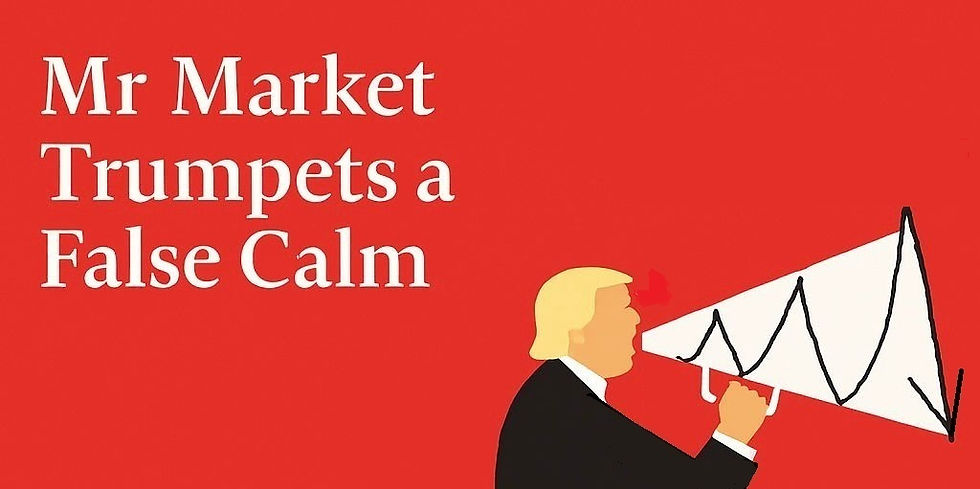I remain steadfast! - Thomas Ng 30 Sep 2022
- whatsyourtradingangle

- Oct 7, 2022
- 4 min read

On Monday 3 Oct 2022 11.10pm, I emailed Clients my latest post titled 'I remain steadfast!'.
Below is the full transcript for your perusal:
'Dear Clients
.
Hope you have been well! Let's do the usual exercise of going thru what I said in my post one month ago, followed by a quick review of what exactly transpired in the markets and finally an outlook for the next few weeks.
.
So what did I say on 1 Sep 2022?
'..Currently with the 4-day pullback in SPX (S&P500 Index) which is approaching 'oversold', I'm expecting a bounce and the Bulls would need to prove soon that they are still in charge by occupying back into the upper segment of the Bollinger Bands. Anything less than such bullish action may see price action meandering into neutral or ranging markets.
.
However, given annual Negative Seasonality at play, my utmost concern is that price action breaks down below the 78.6% retracement level at 3784 which will likely make me reassess the premise that the low is in place..'
.
What actually happened:
After the US holiday on 5 Sep, SPX immediately bounced up for 4 straight days but alas the Bulls were held back by the Bollinger Bands (BB) midpoint line. If you fully understand my Bollinger Bands playbook, you will know that this type of price action (i.e. price's inability to cross over into upper BB segment authoritatively) usually sets the stage for continual pullback.
.
Also mentioned on 1 Sep was that once SPX breaks below the 78.6% retracement level at 3784 (see attached SPX chart), the probability of seeing a lower low (vs June 2022 low at SPX 3636) is very high.
We got the break of 78.6% retracement level on 22 Sep and true to form, we witnessed a new closing low six market days later on 30 Sep.
.
What's next for the next few weeks?
Since Feb 2022 this year, I've set the SPX correction target to be around 3700 as that is the target of the bearish Head & Shoulder Pattern when it fully executes. With the break of June's low on 30 Sep closing coupled with annual Negative Seasonality, I am of the view that price action is simply doing an 'extension' downwards rather than the start of an imminent crash.
.
However, I didn't like to be labelled as a 'broken clock', so for clients who wish to know what is the next potential support zone in SPX, feel free to drop me a line.
.
I recalled the current predicament was similar to the 2019 super bull run (though in reverse) where I urged clients then to take profit in January 2020 and wait for the incoming correction. SPX continues to rally hard and price action extends beyond all my bullish targets and then some, before succumbing to the 35% crash. (See this post for ref: https://tinyurl.com/how-we-play-the-hand)
Will this cyclical correction thus do the same and continue to extend downwards before doing a mega-reversal to reach, at least, the all time highs?

S&P500 Index (SPX) Daily Chart, 15-mth (dated 3 Oct 2022 Monday pre-open)
I remain steadfast that the long term bull market is not over yet for reasons below:
1. Fundamental reason:
Peak inflation in 2022. The S&P GOLDMAN SACHS COMMODITY INDEX (SPGSCI) is currently down 29% since Mar 2022. By the time the pullback in commodity prices feeds down into the inflation numbers, the FED is likely able to pause rate hikes and may even cut rates to boost the US economy in 2023. For that matter, the FED will likely have enough runway to cut rates by then, if needed.
(I mentioned this point on peak inflation back in my 25 Jul post - https://tinyurl.com/mybullishscript25jul)
.
2. Technical historical pattern 1:
US midterm elections 4 year cycle. The S&P500 Index has historically outperformed the market in the 12-month period after a midterm election, with an average return of 16.3%. More info can be found here:
.
3. Technical historical pattern 2:
US Presidential elections 4 year cycle. The Presidential Election Cycle Theory suggests that markets perform best in the second half of a presidential term when the sitting president (currently Biden) attempts to boost the economy so as to get re-elected. 2023 will mark the 2nd half of the Presidential Cycle running into the 2024 US Presidential elections. More info can be found here:

Average S&P500 performance post Midterm Elections since 1962
Source: www.usbank.com/investing/financial-perspectives/market-news/stock-market-performance-after-midterm-elections.html
.
Conclusion in Layman's terms:
- Peak inflation in 2022 will likely allow the FED to pause or even cut rates in 2023. The wild card is possibly crude oil price should the Ukrainian war escalates & blows out of proportion. Crude Oil tends to be the major component for most commodity indices.
- Due to the US midterm elections 4-year cycle, the S&P500 Index has historically outperformed the market in the 12-month period after a midterm election, with an average return of 16.3%.
- Lastly, the 4-year Presidential Election Cycle suggests that markets perform best in the second half of a presidential term when the sitting president (currently Biden) launches all possible policy moves at his disposal to boost the economy so as to get re-elected in the 2024 Presidential Election.
.
Let's watch this space & queries welcome.
.
As usual, Live Long & Trade Well!
.
Thank you & regards
.
Thomas Ng, CMT
Principal Trading Representative 首席股票经纪
.
#plsreaddisclaimer #chartforillustrationonly #spx30sep22 #onemorelow #priceactionextension #befluid #wytant #livelongandtradewell
Chart source: tradingview
Image source: www.luciasblog.com/2020/09/blog-post_21.html



Comments